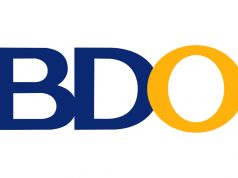World Bank tempers 2017 Philippine growth forecast
THE WORLD BANK has tempered its economic growth outlook for the Philippines to 6.8% for this year from an April 6.9% estimate, after official first-quarter data bared slower investment and public spending, but kept its 2018 projection at 6.9%.
“The World Bank has updated the economic outlook for the Philippines for 2017-2018 as part of its quarterly forecast exercise. The new and slightly revised 2017 projection considers recent economic trends and compares with the 6.9% forecast released in the April edition of the World Bank Philippine Economic Update. The forecast for 2018 remains unchanged at 6.9%,” World Bank said in a statement.
The World Bank’s estimate for the Philippines matches the International Monetary Fund’s 6.8%, is slightly below the United Nations Economic and Social Commission for Asia and the Pacific’s 6.9% but is faster than the Asian Development Bank’s 6.4%.
Philippine gross domestic product (GDP) grew by a slower-than-expected 6.4% last quarter — against a 6.5-7.5% official full-year target — as household consumption and state spending weakened without the boost last year’s May election gave the economy.
That pace nevertheless made the Philippines the second fastest-growing major Asian economy next to China in those three months.
“Growth in the first quarter of 2017 was in line with the World Bank growth projection, given the high base in quarter one of 2016, when large election-related spending boosted growth,” the multilateral lender added.
“Reflecting slower public spending in the first quarter, government consumption and investment growth somewhat weakened on an annual basis.”
The first three months saw government expenditures rise four percent annually to P615.4 billion, with P117.5 billion going to infrastructure that itself was a bigger 12.2% increment. Overall state spending has been picking up, growing six percent year-on-year to P1.06 trillion in the five months to May. But latest available official data show infrastructure spending edging up just 2.6% to P151 billion in the four months to April against a P847.2-billion program for the entire 2017. The government aims to spend a total of P2.909 trillion this year.
“In the medium term, supporting higher investment levels will be critical to sustain the economy’s growth momentum,” the statement quoted Birgit Hansl, World Bank Lead Economist for the Philippines, as saying. “The government’s ability to realize its infrastructure spending agenda will determine if the Philippines can achieve the growth target of 6.5-7.5% for 2017.”
Household consumption, which has historically contributed more than 60% to GDP, “is anticipated to grow at a stable rate of 5.6% in 2017 and 6.1% in 2018” from 2016’s actual 7.2%, the World Bank said in its statement.
Money sent home by Filipinos abroad, which grew eight percent in the first quarter compared to the year-ago three percent, is expected to fuel consumption. — Elijah Joseph C. Tubayan



